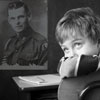Healing The Scars Of Centuries
 by Joe Fisher
by Joe Fisher
The clinical validity of past life therapy has been established beyond doubt. With increasing regularity over the last forty years, hundreds of thousands of suffering people have been lulled into altered states of consciousness and guided through the veil of time to relive, or view with detached wonderment, critical episodes of former existences – it might be a workhouse in nineteenth-century England, a mud hut in ancient Somalia or a Mayan temple courtyard deep in the Central American jungle.
To match the onrushing change of scenes, the clients of past life therapy find that they assume identities from out of the amnesia of hundreds, even thousands, of years. Anything can – and does – happen. A hearty-voiced plumber might become a lisping peasant girl; a placid secretary could take on the persona of a fierce warrior. Some people observe their transformation as if they were seated in the front row of a theater of the mind; others enter the very body of the character. And then there are those who sense or feel events unfolding from afar. However a past life is perceived, the aim of the therapy is to mine the experience of the soul; to heal through self-understanding.
Having ensured that the source of a patient’s troublesome condition cannot be detected in the current lifetime, the therapist knows the canker is lurking somewhere in the individual’s repertoire of past lives. This buried trauma invariably reverberates in the life of today as physiological pain or mental anguish, or both. For past life therapy confirms that mind and body share the closest of relationships, that a psychological component exists for every physical disease, and vice versa. While many hours spent probing successive lives may be required to locate the source of the aggravation, healing is often rapid and dramatic once the pertinent information has been wrested from the subconscious. No one can state with certainty how this remedial effect is wrought, but it would appear that the very act of confronting and accepting negativity long trapped in the psyche provokes some alchemy of liberation. The release of blocked energy seems to encourage the evaporation of the cause of the ailment which could be cancer, multiple sclerosis, ulcers, arthritis, obesity, stuttering, migraine headaches, depression, learning disability, epilepsy, every conceivable form of phobia, addiction, allergies, sexual inadequacy – the lot! The end of the regression isn’t necessarily the end of the experience. Confused memories, emotions and expanded awareness of the trauma can invade the patient’s dreams and waking consciousness for weeks or even months afterwards.
Patients’ oft-expressed strong identification with the personalities assumed under hypnosis as well as the fact that many a past life individual has been historically verified, strengthens the case for reincarnation. So does the research of Dr. Helen Wambach whose subjects, regardless of their sex in the current lifetime, have divided strictly according to biological fact by recalling 50.6 percent male and 49.4 percent female lives when regressed to time periods as far back as 2000 B.C. The studies of Dr. Wambach – even though her subjects were primarily white, middle-class Americans – also accurately reflect race, class and population distribution in the real historical world as well as the clothing, footwear, worn across the centuries, and the type food eaten and utensils used.
Nevertheless, proof of reincarnation is no more accessible to past life therapists than it is to investigators of infant recall. “Even if every detail given by a patient under hypnosis is shown to be an accurate statement about a person who had once live,” says hypnotherapist Dr. Edith Fiore, “you are not proving the patient actually lived the life. You are just showing that someone lived and died. The patient could be tapping into someone else’s thought forms.” Which isn’t to say that Dr. Fiore, a clinical psychologist from Saratoga, California, discounts reincarnation. Far from it. In the first eight years of using hypnosis as the mainstay of her practice, she swung from disbelief to a 99 percent conviction in rebirth. “If someone’ phobia is eliminated instantly and permanently by the remembrance of an event from the past, it seems to make logical sense that that event must have happened,” she declares.
Certainly, this viewpoint is disputed by hypnotherapists who don’t believe in reincarnation. Such a man is Dr. Gerald Edelstein, a staff psychiatrist at Herrick Memorial Hospital in Berkeley, California, who has found that, despite his ideological prejudice, several of his patients have slipped into past lives – with terrific results! He admits candidly: “These experiences, for reasons I cannot explain, almost always lead to rapid improvements in the patients’ lives.”
Says Dr. Morris Netherton, a pioneering Los Angeles practitioner: “Many people go away believing in reincarnation as a result of their experience; others see it as symbolic, metaphorical. But what is the logical answer? That it actually happened! It took nature ten million years to build the Grand Canyon and that’s just a big hole in the ground. I can’t believe it takes just seventy or eighty years to build a man’s soul.”
What Netherton does believe is that “everything in the mind comes from what has gone on before.” He defines imagination as “the sum total of everything that ever happened to you in every lifetime you ever lived.” It’s a grand vision, created and corroborated by the testimony of more than eight thousand patients. This chubby, energetic personality whose coffee mug bears the slogan “World’s Greatest Doctor” was raised a fundamental southern Methodist. He hardly considered the idea of reincarnation until seventeen years ago when, beset by unemployment, a chronic bleeding ulcer and feelings of emotional inadequacy, he turned in despair to conventional therapy. “In the third session I talked about the pain I was feeling,” he said, “and the next thing I knew I was in a different place.” Suddenly, spontaneously, Netherton visualized himself in a Mexican institution for the criminally insane. The year was 1818. A guard had kicked him in the stomach in the exact spot where his ulcer had flared. He understood that his lands had been seized by his wife and her family who had conspired to have him committed. At the same time, he was intuitively aware that his wife in that life was also Carol, the woman he is married to today. (Being told of this later at a local restaurant, Carol “passed out in her mashed potatoes” to quote her husband.)
Whatever the truth of this flashback of confrontation, Netherton was at once granted “amazing relief” from pain that has never returned. Hired as a probation officer, he went on to win a master’s degree in counseling and a doctorate in psychology. Yet he was not converted instantly to a belief in reincarnation. Conversion came slowly as a byproduct of his self-development as a therapist in which he personally underwent more than 1,200 hours of past life examination. The Netherton Method, expounded in the best seller Past Lives Therapy and since practiced not only in Los Angeles but also in training offices in Montreal, Sao Paulo, Brazil and Stuttgart, West Germany, is unique in that it relies, at the outset, on a patient’s use of specific recurring or out-of-place phrases. Guided by these key phrases, for example, “It’s hopeless” or “They’re holding me down,” Netherton attempts to unlock the unconscious by asking the patient to concentrate on repeating them. This repetition jogs the patient’s mind to an image, the starting point for a detailed reconstruction of pain, guilt and trauma. Netherton says his patients must relive traumatic experiences of the past in order to clear up their current problems. “You have to bring it into the body,” he declares. “That’s the only way you can be assured you’re getting accurate information.” And so, often screaming, writhing, moaning, weeping and breaking into foreign languages, Netherton’s subjects enter their battened-down ugliness in order to leave it all behind. Past births and deaths – common sources of behavioral disorder – are commonly reenacted. And Netherton insists that no past life trauma is completely erased without detecting the unresolved prenatal incident, or incidents, that activates a track of problematical past lives in the individual. Noting that the fetus is extremely sensitive to the mother’s thoughts and feelings (an observation substantiated by the findings of Dr. Tom Verny) Netherton writes in Past Lives Therapy:
“The unborn child, awaiting the beginning of conscious life, is profoundly affected by this prenatal awareness. With no conscious mind to discern or interpret, the unconscious plays back any past life incidents triggered by events in the mother’s life. These incidents shape the behavior patterns of the child. At birth the infant will begin a life of trying to resolve those past life events without ever knowing what they are.”
It matters not whether Netherton’s patients, who range from priests to physicists, believe in reincarnation: the recall flows just the same, restricted neither by creed nor color. Whites, for example, hark back to existences as black slaves; Chicanos remember fighting as British soldiers in World War II, and as if to invalidate the genetic memory interpretation, many have described being alive during their parents’ lifetimes! “Some patients start by feeling that they are ‘making up’ parts of what they tell me,” Netherton has written, “but they soon discover that they cannot change the content of their past life incidents, and must reveal the most personal and painful aspects of the stories they had thought were imaginary. This is what most quickly convinces the skeptic. He begins by saying the first thing that comes into his head simply to placate me. But the moment he comes face to face with his pain, he can no longer deny the validity of the therapy.”
Among the conclusions Netherton has gleaned from his patients’ testimony is that each individual returns to Earth at the identical stage of development reached at the time of death. He urges people, wherever possible, not to enlist artificial support at death “unless you want to come back in that way, being supported. You come back as you went out. It’s a continuous journey.” Abortion, according to Netherton’s findings, is “the killing of something that has feeling.” Time and again, he has asked patients who have regressed to aborted embryos whether they have a message for their mothers and often that message is a haunting “I’ll be back.” The act of abortion appears to set up a pattern of incompletion for the protagonists which can exert a domino effect from life to life. In fact, the recurrence of similar patterns and problems over a sequence of lives is a common phenomenon perceived by Netherton as the unconscious mind’s way of resolving specific issues through repeated trials of close resemblance.
Victims Of The Self
Dr. Edith Fiore singles out guilt as the architect of the most profoundly negative effects in her patients’ experiences. “When I see someone with four or five symptoms, when they are losing in the game of life, it’s as if they are saying: ‘I don’t deserve this, that and the other,’” says the author of You Have Been Here Before. She also finds that “nobody is ever a victim without a cause”: her patients have always earned their discomfort by their own actions.
Illustrating this system of cause and effect, which mirrors the Hindu and Buddhist doctrine of karma, is one of Fiore’s most dramatic cases. A woman in her mid-thirties, who booked therapy in desperation after undergoing twelve operations for bone cancer, saw herself, under hypnosis, as a priestess in an ancient cult which practiced human sacrifice. Her role was to drink the blood of the sacrificial victims, a chore she detested. But, as the choice was drink, or be sacrificed yourself, she hardened herself to the task. After the regression, the woman submitted to a blood test prior to yet another expected operation. The test revealed there were no longer any living cancer cells in her body and the operation was canceled. Now that several years have elapsed and the woman appears to be completely healed, it’s interesting to reflect that blood is manufactured in the bone marrow – the very site of her affliction.
Speaking to the second annual conference of the Association for Past Life Research and Therapy in Los Angeles in October, 1982, Fiore declared: “Other therapies address the symptoms and leave the cause untouched. Past life therapy attacks the root cause. There isn’t a single physical problem that can’t be resolved by good past life treatment.” This statement was the product of her clinical experience which has shown that all sorts of ailments can be traced back to past lives. She has found that practically all patients who are overweight by more than ten pounds have had a lifetime in which they starved to death or suffered food deprivation for long periods. Irrational fears of snakes, of fire, of being alone, of flying, of darkness, of crowds, of natural cataclysms such as earthquakes and storms, have been relieved by coming to terms with terrifying past life misfortunes. One teenage boy, for example, was troubled by only being able to fall asleep if he was alone and in total silence. His difficulty was traced to his having been bayoneted to death by a Japanese soldier while sleeping on the beach of a Pacific island during the Second World War. The origins of migraine headaches have been variously determined as clubbing, guillotining, shooting, stoning, hanging or scalping in another existence. Those with chronic abdominal pains have relived having their bellies run through with swords, bayonets or knives. Even menstrual problems have been seen to stem from past life sexual trauma, while instant attractions, dislikes and feelings of familiarity or distrust have become perfectly understandable after a glimpse of events in former existences.
“Are they putting on an act?” Fiore asks rhetorically of her patients in You Have Been Here Before. “If so, most should be nominated for Academy Awards. I have listened to and watched people in past life regressions under hypnosis for thousands of hours. I am convinced there is no deliberate, nor conscious attempt to deceive. The tears, shaking, flinching, smiling, gasping for breath, groaning, sweating and other physical manifestations are all too real.”
It’s fitting that Californians, with their legendary affluence and fixation for self-discovery, should be the world’s greatest patrons of past life therapy which can cost as much as $300 an hour in the redwood state. Yet the origins of hypnotic regression – which gripped California in the mid-seventies and has failed to let go – can be traced to turn-of-the-century France and the experiments of the enigmatic Colonel Albert de Rochas. Conducting transverse and longitudinal passes with his hands in the style of Franz Anton Mesmer, the Austrian physician who gave his name to hypnosis or “mesmerism,” Rochas swept his subjects back into a succession of past lives.
One of these subjects was eighteen-year-old Mlle. Marie Mayo, an engineer’s daughter, who was first taken back to the age of eight when, having attended a school in Beirut, she wrote her name in Arabic. Beyond her birth, she called herself Lina, the daughter of a fisherman in Brittany. She related how she married, at twenty, a fisherman called Yvon, how her only child died at the age of two, and how, in a fit of despair after her husband’s death in a shipwreck, she threw herself into the sea from the top of a precipice. Marie Mayo relived the convulsions of drowning before passing into another incarnation, this time as a man – Charles Mauville, a clerk and murderer who lived during the time of Louis XVI. Still further back, she became Madeleine de Saint-Marc, whose husband was a gentleman of the French court.
As fascinating and as plausible as most of Rochas’ subjects were, they never gave precise information which could be checked out with historical fact even though the places and families mentioned were often known to have existed. This frustration caused Rochas – who tried in vain to divert his subjects’ recall so as to counteract any suggestion that he was prompting telepathically the experimental evidence – to reflect upon “the darkness in which all observers have to struggle at the beginning of every new science.”
For years, psychiatrists and psychologists interpreted their patients’ occasional spontaneous recall from other lives as mental derangement. But there were always investigators knocking at the door of the unknown. Sweden’s John Bjorkhem (1910-1963) advanced the fledgling science by conducting hundreds of regression experiments in which the previous lives claimed under hypnosis were frequently verified. An in 1950, Dr. Alexander Cannon, an Englishman awarded degrees by nine European universities, grudgingly gave in to the evidence of rebirth produced by 1,382 volunteers who, when regressed, spoke of living in various time periods as far back as several thousand years before Christ. He wrote in The Power Within:
“For years the theory of reincarnation was a nightmare to me and I did my best to disprove it and even argued with my trance subjects to the effect that they were talking nonsense. Yet as the years went by one subject after another told me the same story in spite of different and varied conscious beliefs. Now well over a thousand cases have been so investigated and I have to admit that there is such a thing as reincarnation.”
Cannon specialized in discovering hidden complexes and fears engendered by traumatic incidents in past lives. Holding that the work of the great psychoanalyst Sigmund Freud had been “out-flanked” by reincarnation, he declared: “The majority of people do not benefit from psychoanalysis because the trauma lies not in this life but in a past life.”
Similar conclusions were reached independently by English psychiatrist Dr. Arthur Guirdham through what he called “a purely intellectual process.” Verifying and cross-referencing over many years a torrent of obscure suggestions, medical symptoms, psychic revelations, automatic writing and recurring dreams, Guirdham came to believe that he was one of a group of people who have reincarnated together in five separate time periods. Having completed forty-four years of medical practice and written fourteen books, Guirdham maintained he had remained a skeptic ever since being nicknamed “Doubting Thomas” as a boy. But he declared quite emphatically: “If I didn’t believe in reincarnation on the evidence I’d received I’d be mentally defective.” The evidence – vast in quantity and complex in nature – does not involve hypnotic regression, but it does point to disease originating in past incarnations. Guirdham cited many examples of the “anniversary phenomenon” in which illness or depression is suffered on days coinciding with tragic happenings in previous incarnations. He argued that while the short duration of symptoms often corresponds to brief incidents in previous lives, longer disturbances will have a more lasting counterpart in a previous existence.
The case of Bonnie Brown, a Toronto fashion model who was regressed to a sickly past life in a concentration camp, backs up this viewpoint. At twenty-nine years of age, Bonnie had been plagued with repeated attacks of bronchitis every winter since childhood. Induced into an altered state of consciousness by hypnotherapist Beverly Janus, she encountered five different lifetimes in the space of an hour. Then she found herself as a young woman in a small East European town wearing drab clothes and a headscarf. With her neighbors, she was taken from her earthen-floored hut and led to a train by soldiers wearing Second World War uniforms. There was no food or water on the train and she was cold and racked with coughing. (Bonnie coughed throughout the regression and felt so cold she had to be wrapped in blankets.) After several days’ journey, Bonnie and her fellow captives were herded into a camp fenced with barbed wire. “I was standing at the fence with my hands on the wire,” Bonnie recalls. “I was coughing blood. I remember thinking: ‘I don’t want to live any more.’ No one seemed to care. I was coughing and coughing until the end.” It was then that Beverly Janus instructed her hypnotized patient that she would no longer be affected by the bad effects of the past. Since that regression in 1972, when she confronted her sickness in what appeared to be her previous incarnation, Bonnie hasn’t experienced a trace of bronchial trouble. She says: “I feel that reincarnation is the best explanation for what happened. But if it was only an exploration of my psyche to show me that I no longer need to have bronchitis, who cares? The main thing is that it works.”
Shirley Kleppe-Moran, a research subject of Dr. Helen Wambach, was similarly relieved of periodic seizures for which there was no medical explanation or salvation. The seizures, lasting from fifteen minutes to an hour, made her body “feel like it was going a million miles an hour” and had afflicted her since the age of seven. Under hypnosis, she entered the life of a young French girl living on the coast of Normandy in the sixteenth century. Suspected of being a witch because she was seen visiting a sick boy who had subsequently died, she was chased by torch-carrying villagers to a line of cliffs where she jumped to her death. Shirley relived her leap into mid-air as the intense, emotional equivalent of her seizures which, since that day in 1977, have never returned.
The Reincarnation Experiments
“The Reincarnation Experiments,” a stunning television documentary in which four housewives from Sydney, Australia, gave details of past lives under hypnosis and then verified the evidence – in front of TV cameras and independent witnesses – by traveling thousands of miles to the scenes of these bygone lives, was screened before the Australian public in March, 1983. Even atheistic reviewers were compelled to admit that reincarnation appeared to be the only logical explanation for these remarkable journeys through time which followed hypnotic regressions conducted by hypnotherapist Peter Ramster.
Cynthia Henderson, for example, who had voiced her past life memories in colloquial French, led a film crew to a bomb-ravaged, 300-year-old chateau near the village of Fleur in Normandy – her home as French aristocrat Amelie de Cheville. The experience was so powerful that she burst into tears. Helen Pickering, another member of the experimental quartet, journeyed to Aberdeen where she had lived as James Archibald Burns, who had been born in 1807 in Dunbar, Scotland. While still in Sydney, Helen had drawn a detailed sketch of Aberdeen’s Marshall College of Medicine that was verified by the only man alive who knew precisely how the building used to be, local historian David Gordon, collector of every plan and drawing from the college’s beginnings. That a woman who had no access to his work and didn’t even know the plans existed could possess such historical knowledge was “inexplicable,” said Gordon. Inexplicable, that is, unless Helen Pickering walked the college’s forgotten corridors and staircases as the medical student James Burns a century and a half ago. Aside from these structural revelations, Helen’s recall of Burns’ life was authenticated by records in the county library at Blairgowrie, the town where Burns had set up a successful medical practice.
Verification isn’t always accomplished so easily. Most regression material doesn’t contain the specifics sorely needed by researchers if only because the dates and the names of towns and streets usually lack the emotional charge that inspires recall. Also, most past lives, having been lived long before the establishment of Marshall McLuhan’s global village, were so removed from the mainstream of history that even such basics as time period and country of origin would have been of little account to the ordinary person. Preoccupation with time is a modern development. Moreover, many nation-states have experienced frequent boundary changes. These difficulties are compounded by the fact that names and dates are stored in the speech centers of the brain, usually the left hemisphere in the temporal lobe, whereas sensory memory recall seems to be a function of the right hemisphere.
Reassuringly, there are ways to establish whether subjects are reporting from genuine altered states of consciousness and not merely spouting the wildest imaginings that enter their conscious minds. EEG (electroencephalograph) studies show that past lives are being tapped when brain levels measure 8.3 cycles per second. Flickering eyelids or REM (rapid eye movement) accompany this state. Some regressionists enlist the aid of a galvanic skin response device which records pore activity when wired to two of the subject’s fingers. Once subconscious memory is reached, the device’s needle moves away from the horizontal position. “It’s like a very unsophisticated lie detector,” said hypnotist John Hainlen, who found the biosonometer increased productivity at his Sacramento clinic. “If the conscious mind starts to interfere, we know at once.”
As the journeying into past lives goes on, the search intensifies for more and better evidence to provide an unshakable interpretation of the phenomena. Be that as it may, many of the researchers in the field have already convinced themselves that reincarnation underlies and makes possible the reams of testimony from other existences. Dr. Helen Wambach, who in 1975 resolved to determine whether past life recall is fantasy or reality, said after regressing thousands of volunteers to past lives: “I don’t believe in reincarnation – I know it.” Pressed to explain her statement, she added: “If you are sitting in a tent on the side of the road and 1,000 people walk past telling you they have crossed a bridge in Pennsylvania, you are convinced of the existence of that bridge in Pennsylvania.” On the other hand, Joe Keeton, who has conducted more than 17,000 regressions and claims to have removed several cancerous conditions by hypnotic suggestion, can make no sense of the phenomena. “I’m just as puzzled now as when I started,” he said. “I’ll keep on prospecting till I die but I doubt whether I shall find the answer.” Then he added: “Apples were falling off trees for millions of years before Isaac Newton came along and asked the right question. What we need are questions, not answers.”
Not recommended for the faint-hearted, past life excursions may help to ease discomfort, alleviate anxiety and enlarge understanding. And while some would say that to be a tourist of far memory is just another way of describing the self-examination of the psyche, what is the psyche but the sum total of an individual’s experience in action? As Hazel Denning, executive director emeritus of the Association for Past Life Research and Therapy, points out: “You are everything you have ever been – right now.”
Excerpt from The Case For Reincarnation
Posted in Other Topics, Past Life Therapy, Reincarnationwith comments disabled.





